Entries Tagged 'Photography' ↓
December 8th, 2008 — Animals, Photography

This ferocious Siberian tiger cub, above, Antares, born at the Berlin Zoo, overpowers his prey by waving his widdle paw, overdosing victims on his saccharine adorableness. As loud “Awwwww!“s then fill the air, the people being entranced are stunned and deafened by the volume of this approval, allowing him to select a victim, pounce, attach himself to his vicitim’s shoulder near the jugular vein, as seen below, and cuddle, rendering his target utterly weak and unable to resist. Sigh. Nature is truly cruel.

[via MyModernMet.com]
December 5th, 2008 — NONFICTION, Photography, Science
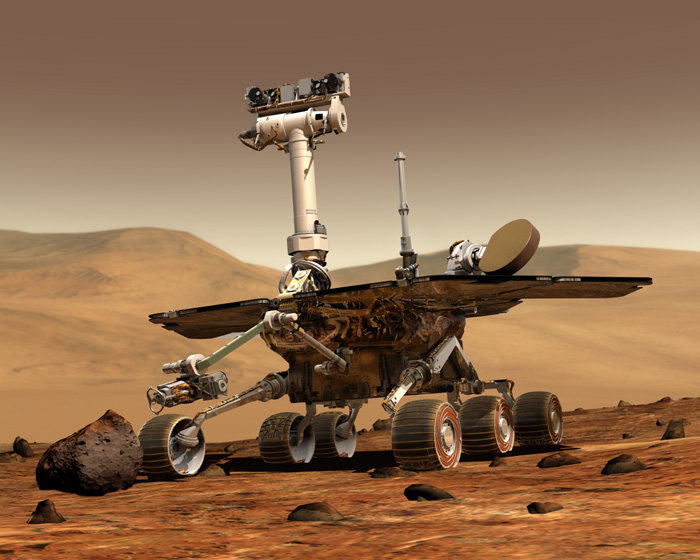
Is space exploration photography an art or a science?
Geologist Jim Bell, an associate professor of astronomy at Cornell University, lead scientist for the Panoramic Camera (Pancam) color imaging systems on the Mars Exploration Rover Mission (MERM), and creator of the book Postcards from Mars: The First Photographer on the Red Planet, would certainly say that the best space photos seamlessly combine compositional creativity with observational objectivity.
Bell’s Pancams are literally the eyes of the identical Spirit and Opportunity Mars rovers. (In the artist’s illustration, above, you can see the device perched atop the rover’s high, white, T-shaped mast.)
For example, this composite, panoramic image, below, taken by Opportunity about two years ago over a period of three Martian weeks, is of the Victoria Crater, on Mars’ Meridiani Planum, or meridian plain, near its equator.

It was shot, in pieces, bit by bit, from the Cape Verde promontory on the rim of the half-mile wide crater. (Click on it, or here, for a larger, more detailed view of this amazing planetary feature.) To accommodate these extremely wide shots, some of the gatefolds in Postcards from Mars are three feet wide.
 To create such images, the rovers have been operating continuously on the Red Planet’s surface since January 2004. Mars, right, is 150,000,000 miles from Earth—equal to the distance one would cover during a round-trip airplane flight 60 years long.
To create such images, the rovers have been operating continuously on the Red Planet’s surface since January 2004. Mars, right, is 150,000,000 miles from Earth—equal to the distance one would cover during a round-trip airplane flight 60 years long.
As such, the 150, literally otherworldy images in Postcards from Mars, fewer than 1/1,000th the total number taken by the crafts, are like vacation photos from a place no human has ever seen with her own eyes. That is, until NASA starts correcting decades of white-manned spaceflight by deeming the first humans to set foot on Mars will be Black females.
Jim Bell is the guest on this encore broadcast of my WBAI-NY / 99.5 FM radio show, NONFICTION, this afternoon, Friday, December 5, at 2 pm ET.
You can hear his lively and thoughtful ideas by tuning in at 2 pm. If you’re outside of the New York tri-state, check out our stream on the web. If you miss the live show, dig into our archives for up to 90 days after broadcast.
November 24th, 2008 — Photography, Technology

Started in 1756 as an optics manufacturer, the German company Voigtländer didn’t even make its first metal camera until nearly a huindred years later, in 1849. Their devices quickly acquired a global reputation for astoundingly sharp images, though, courtesy of the firm’s revolutionary Petzval lenses.
Over the decades, Voigtländer created a number of technically innovative products, like their 1965 Vitrona, the first 35mm compact camera with a built-in electronic flash. The post-World War II mega-dominance of the photography biz by Japanese camera manufacturers, however, ultimately led to their demise and to Cosina’s 1999 acquisition of the Voigtländer name.
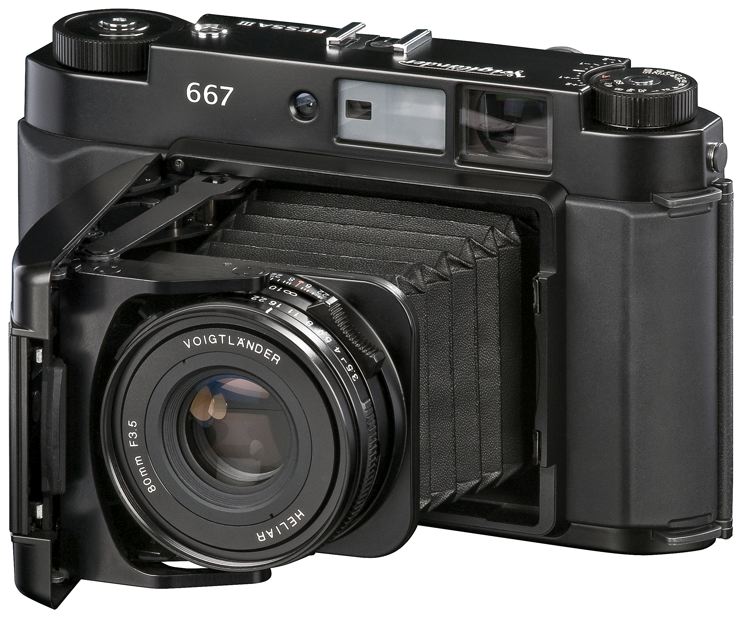
In the nearly ten years since, though, Cosina’s produced several solid-body, Leica screw mount film cameras under Voigtländer’s famed marque. Now, it looks like they’re truly feeling their royal oats, having recently announced the upcoming 2009 release of the Voigtländer Bessa III, above and right.
Continue reading →
November 14th, 2008 — Architecture, NONFICTION, Photography

Finnish-American architect Eero Saarinen remains one of the most heralded, inventive artists of the 20th century. For example, when William Hewitt, below, CEO of the John Deere tractor company, hired the bespectacled builder in 1956 to fashion their Moline IL world headquarters,
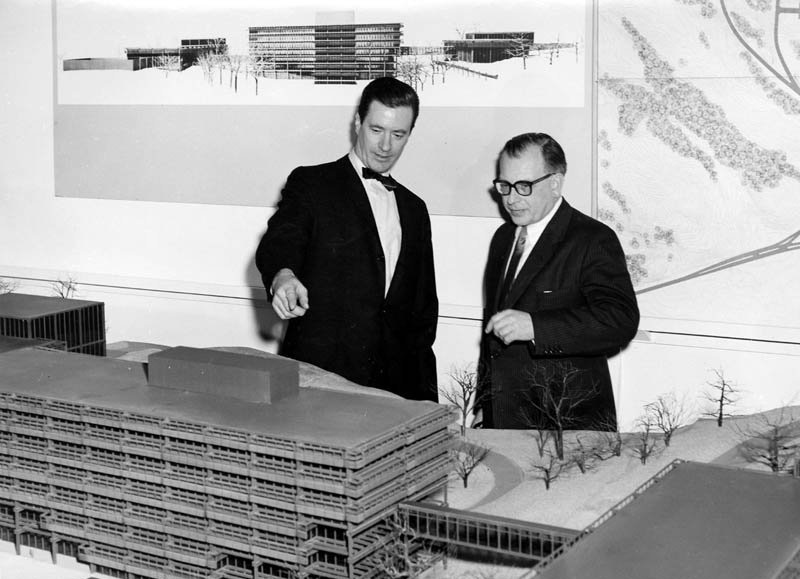 Hewitt emphasized that, while he wanted a headquarters that was unique, it must reflect the character of the company and its employees. “The several buildings should be thoroughly modern in concept but should not give the effect of being especially sophisticated or glossy. Instead, they should be more ‘down to earth’ and rugged,” he wrote. …
Hewitt emphasized that, while he wanted a headquarters that was unique, it must reflect the character of the company and its employees. “The several buildings should be thoroughly modern in concept but should not give the effect of being especially sophisticated or glossy. Instead, they should be more ‘down to earth’ and rugged,” he wrote. …
Saarinen satisfied Hewitt’s instruction that the buildings look down to earth by using Cor-ten steel for the exterior structure of the building. Cor-ten®, a material that resists corrosion by forming a protective coating of iron oxide, develops an earthy color as it ages, much like newly plowed soil. Developed for railroad track construction and other uses, this marked the first use of Cor-ten® in an architectural application.
The results, above, completed in 1964, three years after Saarinen’s death, were so imaginative they moved one critic to note that, having made something apt and fit for a farm equipment manufacturer, Saarinen had also created a site whose “strong yet artfully detailed lines bear a curious resemblance to Japanese temple architecture.”
Working almost continuously with Saarinen, photographer Balthazar Korab documented every aspect of the great man’s creative process. Over 800 of his images form the massive backbone of a new book, Eero Saarinen: Buildings From The Balthazar Korab Archive, edited by David G. DeLong and C. Ford Peatross.
C. Ford Peatross, a curator with the Library of Congress, is the guest today on my WBAI-NY / 99.5 FM radio show, NONFICTION, this afternoon, Friday, November 14, at 2 pm ET.
Not only did Korab richly, beautifully record Saarinen’s work, argues Peatross—the lush book represents less than 10% of the photog’s archives—but Korab’s proficiency captured the earliest moments of Saarinen’s elusive method, enabling him to look more profoundly into his own deep thinking.
You can hear this original scholar’s ideas by tuning in at 2 pm. If you’re outside of the New York tri-state, you can check out our stream on the web. If you miss the live show, check out our archive for up to two weeks after broadcast.
November 10th, 2008 — Art, Photography
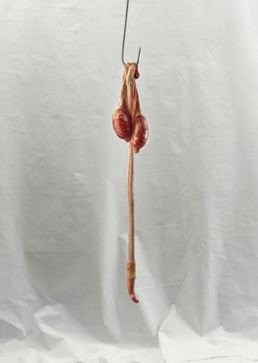
Testicles, from the series Body of Love,
Lambda print, 40×28 in., 2002-2005, by Sheffy Bleier
Meat After Meat Joy, at Daneyal Mahmood Gallery in New York City (511 W. 25th St.), “brings together the work of contemporary artists who use meat in their work (raw meat, the concept of meat, its symbolism and viscera) in order to investigate the paradoxical  relationship meat has to the body.”
relationship meat has to the body.”
From Sheffy Bleier’s photo of bull’s testicles, above, to Zhang Huan’s beef muscle suit, right, to Simone Rachell’s wax paper sculpture of a toilet made of meat, it’s a show you can intellectually, ahem, sink your teeth into…or, then again, harshly protest with 30 of your closest vegan comrades. Through Nov. 15; daneyalmahmood.com.
[via BoingBoing]
October 20th, 2008 — Black Music, Photography
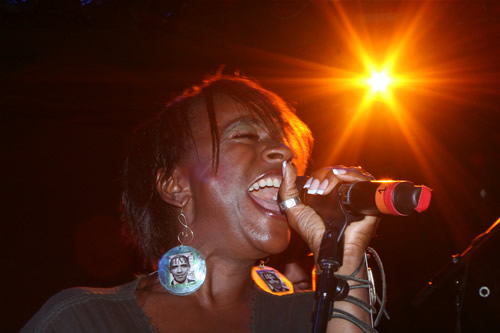
Incendiary photography by Bold as Love‘s Rob Fields of Sandra St. Victor (The Family Stand, “Ghetto Heaven”), above, at a “Rock for Barack” event in New York City last month. Bold As Love takes its name from Jimi Hendrix’s 1967 album, Axis: Bold as Love. “Ultimately,” says Fields, “I believe that Black rock can save Black culture.” Imminently, from the looks of things.
October 20th, 2008 — Animals, Humor, Photography

CatsThatLookLikeHitler.com compiles pictures of felines, above, who, by virtue of their natural coloration and markings, resemble the infamous leader of the Third Reich.
 Featuring thousands of “kitlers” from around the world, plus an online store full of “kitlerware” festooned with their glorious logo, right, CatsThatLookLikeHitler.com should leave ailurophilic Germanophobes clenched with debilitating uncertainty and shock, but all others in stitches. Robert Morales (Truth: Red, White & Black) calls it the “best web site ever.” Apparently, even Bob is prone to occasional understatement.
Featuring thousands of “kitlers” from around the world, plus an online store full of “kitlerware” festooned with their glorious logo, right, CatsThatLookLikeHitler.com should leave ailurophilic Germanophobes clenched with debilitating uncertainty and shock, but all others in stitches. Robert Morales (Truth: Red, White & Black) calls it the “best web site ever.” Apparently, even Bob is prone to occasional understatement.
October 17th, 2008 — Controversy, History, NONFICTION, Photography, Race, Sports
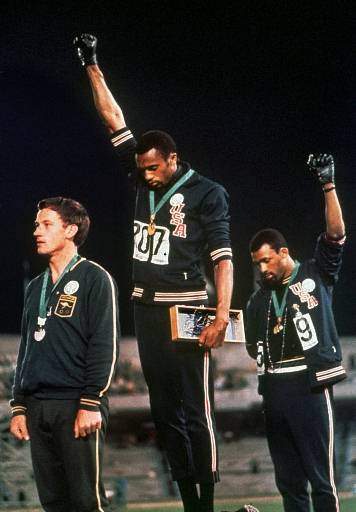
It may be the most iconic moment in all of sports history. Forty years ago, this week, U.S. athletes Tommie Smith and John Carlos, center and right, above, having placed gold and bronze medals, respectively, in the 200m dash at the 1968 Olympics in Mexico City, went to the center of the field to accept their honors.
They stepped onto the podium, shoeless, wearing black socks, and, as “The Star-Spangled Banner” sounded forth, lowered their heads, and raised gloved, Black power fist salutes to the heavens. (LIFE magazine photographer John Dominis snapped the powerful image.)
The reaction was immediate and passionate. The stadium audience hotly booed the duo as they walked away, and the International Olympic Committee, which governs the games, expelled the athletes, as their protest made headlines around the globe.
In her 2002 book, Not the Triumph but the Struggle: The 1968 Olympics and the Making of the Black Athlete, historian Amy Bass deeply diagrams the backdrop against which the protests took place, but, even more, shows how the act powerfully redefined the concept of the Black athlete in the popular imagination.
Dr. Amy Bass is the guest, today, on my WBAI-NY / 99.5 FM radio show, NONFICTION, this afternoon, Friday, October 17, 2 pm ET.
If you’re outside of the New York tri-state, you can check out our stream on the web. If you miss the live show, check out our archive for up to two weeks after broadcast.
October 9th, 2008 — Photography, Science
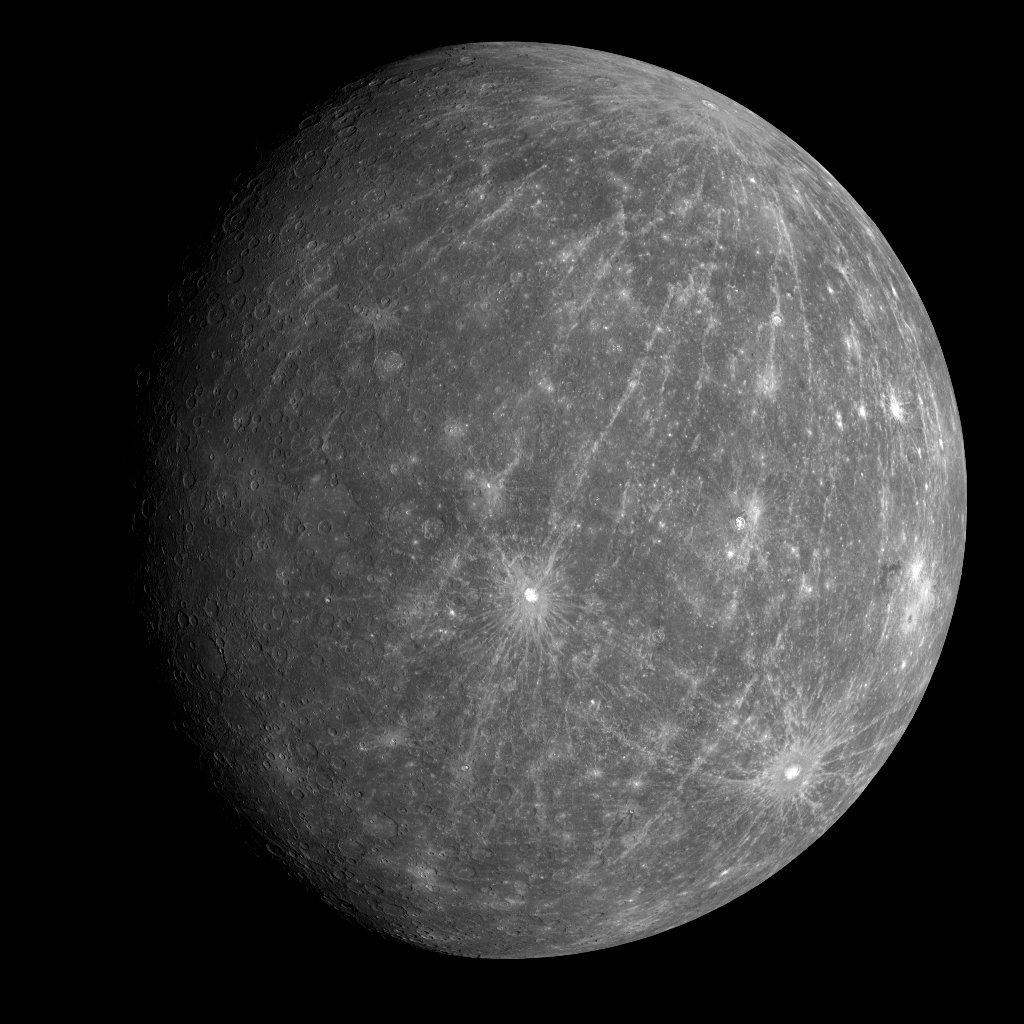
On Monday, the NASA spacecraft MESSENGER (MErcury Surface, Space ENvironment, GEochemistry, and Ranging) flew as close as 124 miles over the surface of the planet Mercury, delivering over 1,200 photographs, such as the one above, to the Johns Hopkins University Applied Physics Laboratory (JHU/APL), which is managing the project.
The main purpose of the flyby, said the agency,
Continue reading →
September 26th, 2008 — Photography
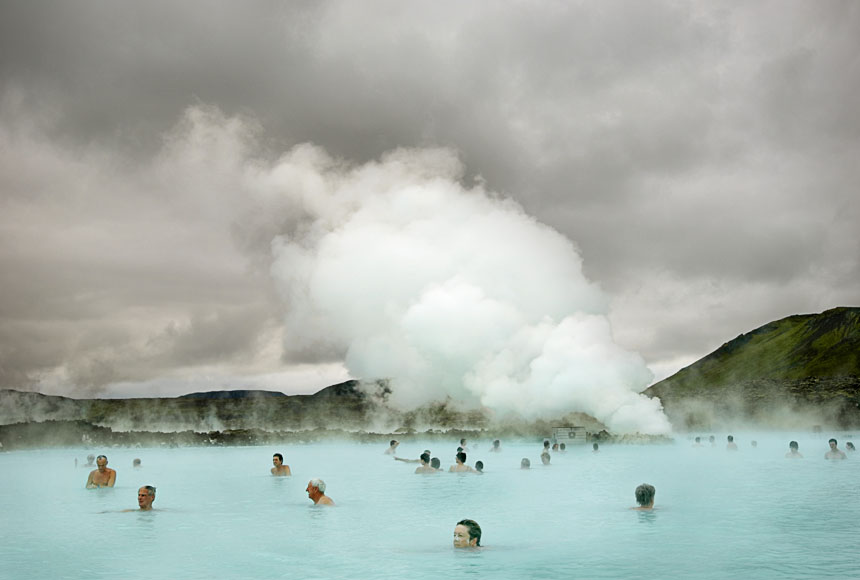
Photographer Tim Gasperak’s visions of Iceland are so lovely I could weep.
[via Panopticist]




 To create such images, the rovers have been operating continuously on the Red Planet’s surface since January 2004. Mars, right, is 150,000,000 miles from Earth—equal to the distance one would cover during a round-trip airplane flight 60 years long.
To create such images, the rovers have been operating continuously on the Red Planet’s surface since January 2004. Mars, right, is 150,000,000 miles from Earth—equal to the distance one would cover during a round-trip airplane flight 60 years long.











